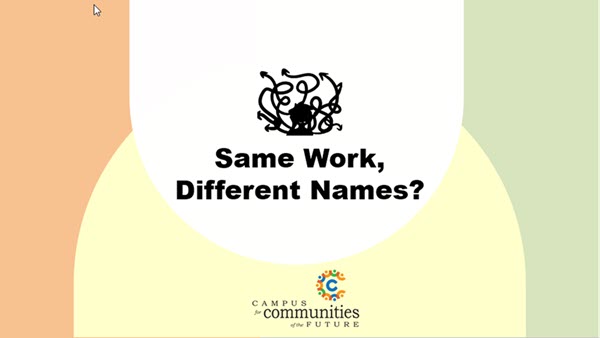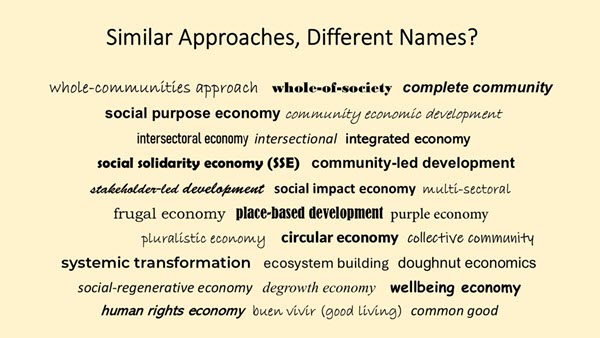Same Work, Different Names?

A number of years ago, my futurist colleagues introduced me to the concept and importance of ‘edge’ or ‘early’ signals.
Unlike a trend, an early or edge signal is more likely to be weak, speculative, and experimental; as such, it offers a glimpse of an emerging possibility that could lead to significant changes in the future.
Edge signals are identified in various ways, including paying attention to the media, training sessions, blogs, interviews, casual observations, and conversations – especially with those who annoy you.
This past week, as I reviewed the draft of a Municipal Official Plan, I noted that an edge signal known as ‘Complete Community’ was reflected throughout the document.
Knowing that a holistic approach to our communities is needed to address complexity, one part of me was delighted to see it coming from the urban planners who play such an essential role in shaping priorities and policies. However, another part of me sighed deeply after seeing another similar approach under a different name. Not only have some of these similar approaches existed for decades – their different names often lead to confusion and a lack of motivation and impetus for collaboration and change.

Officially, “complete community” refers to a concept in urban and rural planning that focuses on creating environments where residents can meet their basic needs and enjoy a high quality of life.
This involves integrating various aspects of community life into planning, e.g. housing, employment, transportation, education, social needs, health, recreation, etc. It also means the approach needs to be accessible and sustainable for all residents, regardless of their income, culture, or political ideologies. In other words, it is about moving away from siloed planning, often skewed to economic development, and instead doing more to balance economic, social, and environmental well-being.
Despite finding another name for the same kind of work, this acknowledgement of an integrated or holistic approach is to be celebrated because it reflects a growing acknowledgement that our systems aren’t working and a willingness to replace them.
A holistic, whole-community practice is emerging as a pathway or beacon that provides the picture on the top of the complicated puzzle box that reflects today’s communities.
Trust and a collaborative culture between and among government, social purpose organizations, businesses, and citizens in developing new systems will be essential.
These challenging times will continue to be fueled by technological change, globalization, population growth, the violence of war, and changing demographics.
Ensuring individual, social, economic, and environmental well-being will require more than typical tweaks and minor improvements to our culture, systems, structures, priorities, and policies.
We urgently need collaborative, pragmatic, and future-oriented action among those doing similar work with different names. There is no one simple solution; however, a willingness to work with others, unlearn, park our egos, and be open to learning and working together is the best way to get there.
Next entry: Scissors or Glue?
Previous entry: Bob Rae: Not Retired and Still Going Strong

 Brenda Herchmer is the owner of Grassroots Enterprises, a community development consulting company.
Brenda Herchmer is the owner of Grassroots Enterprises, a community development consulting company.